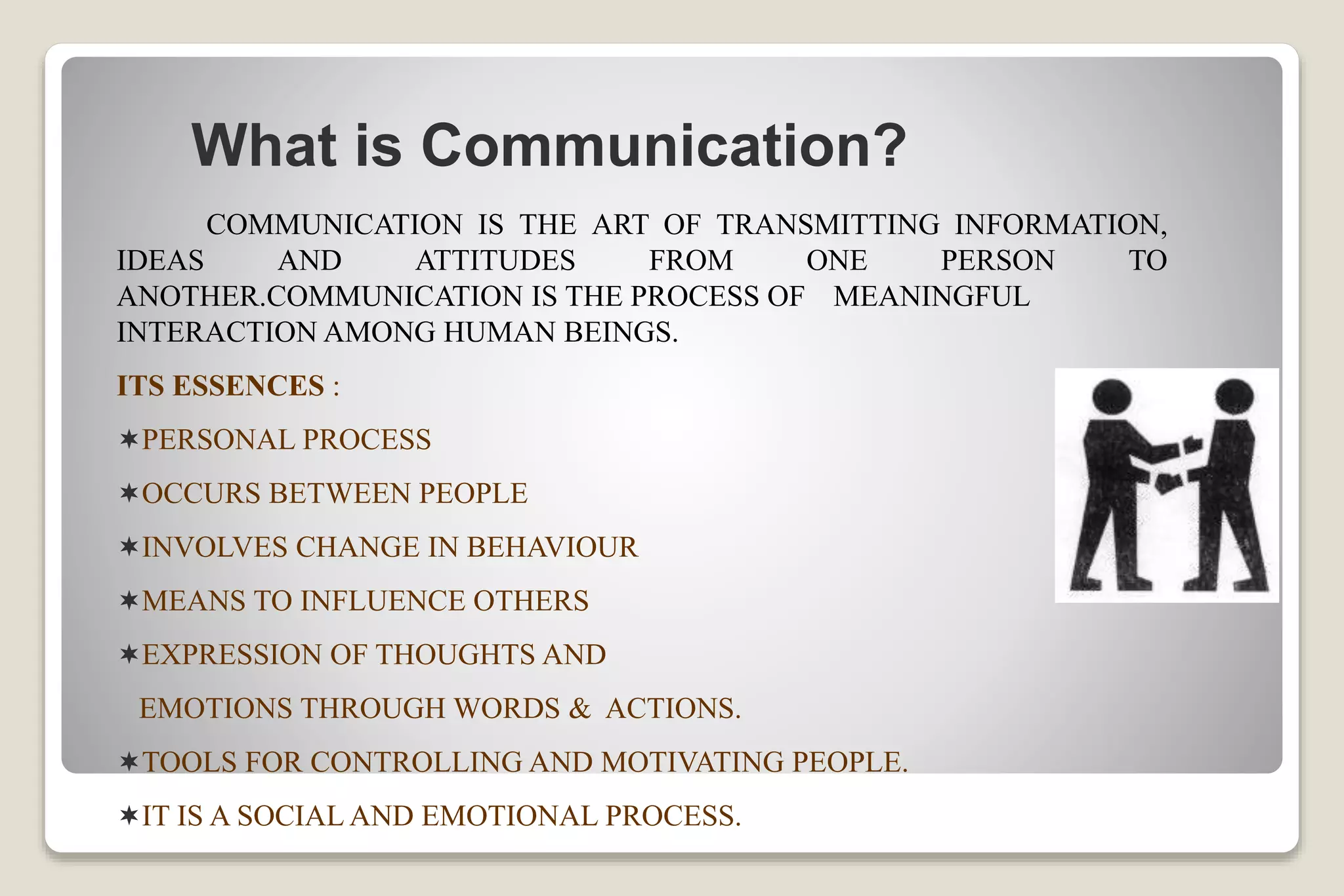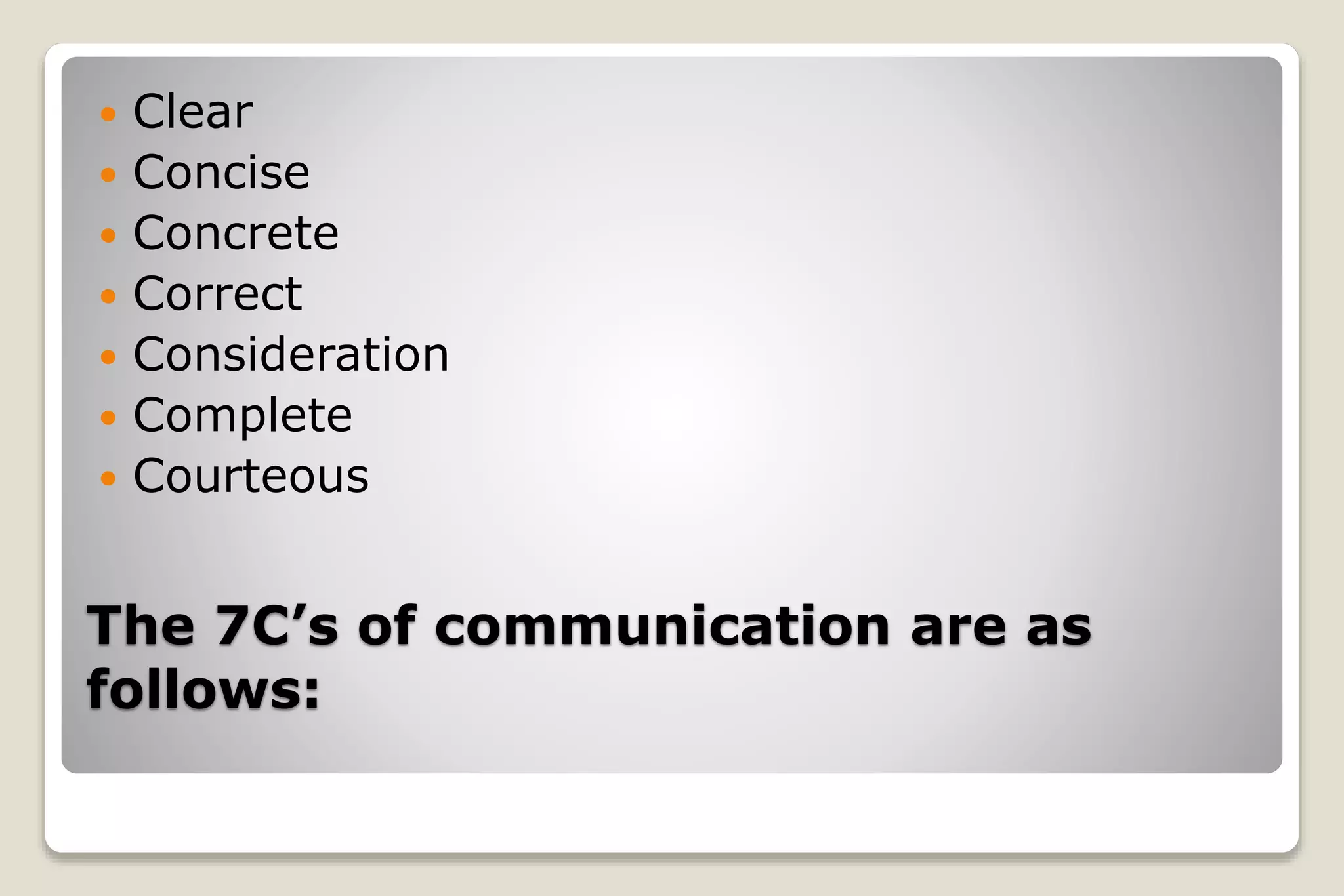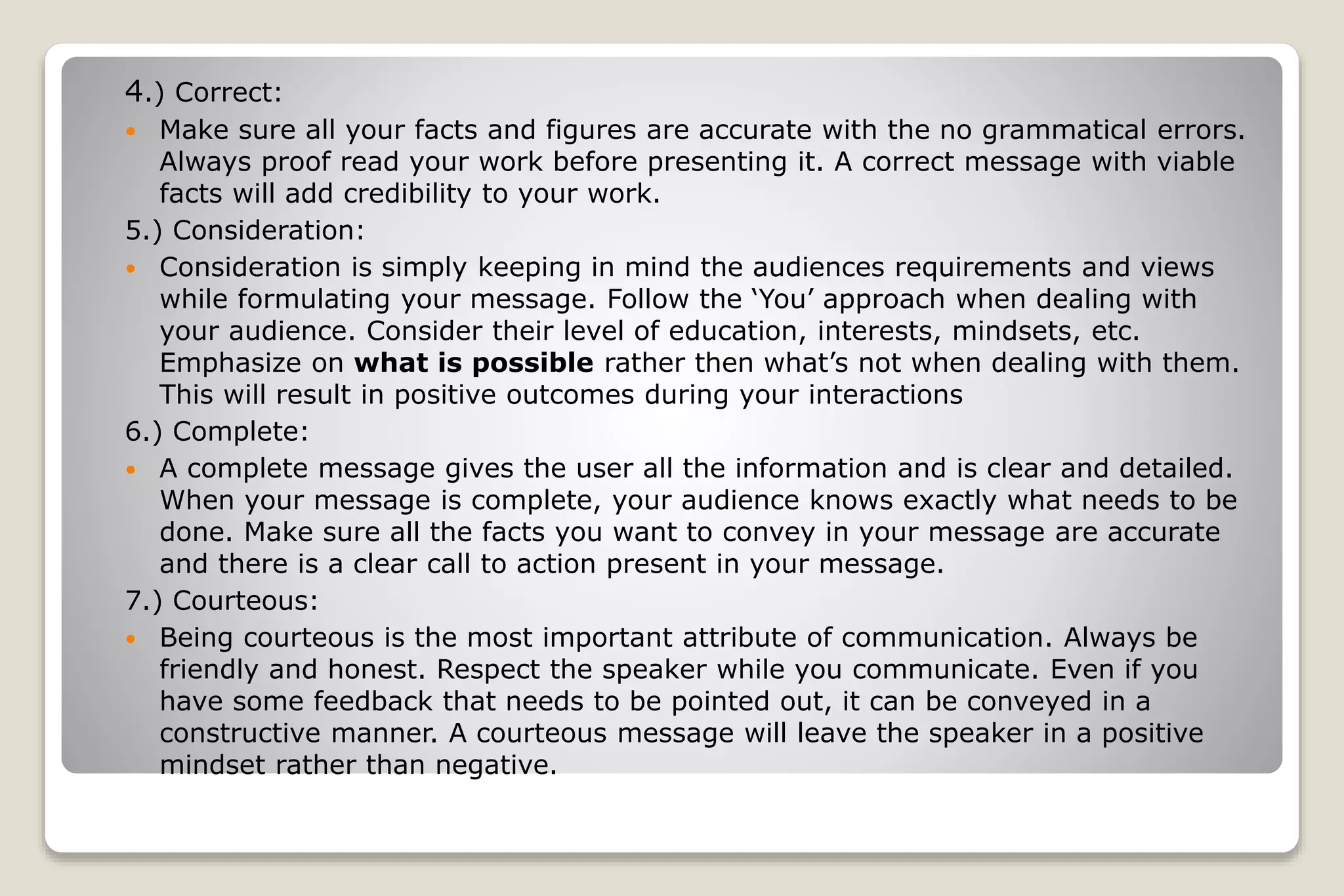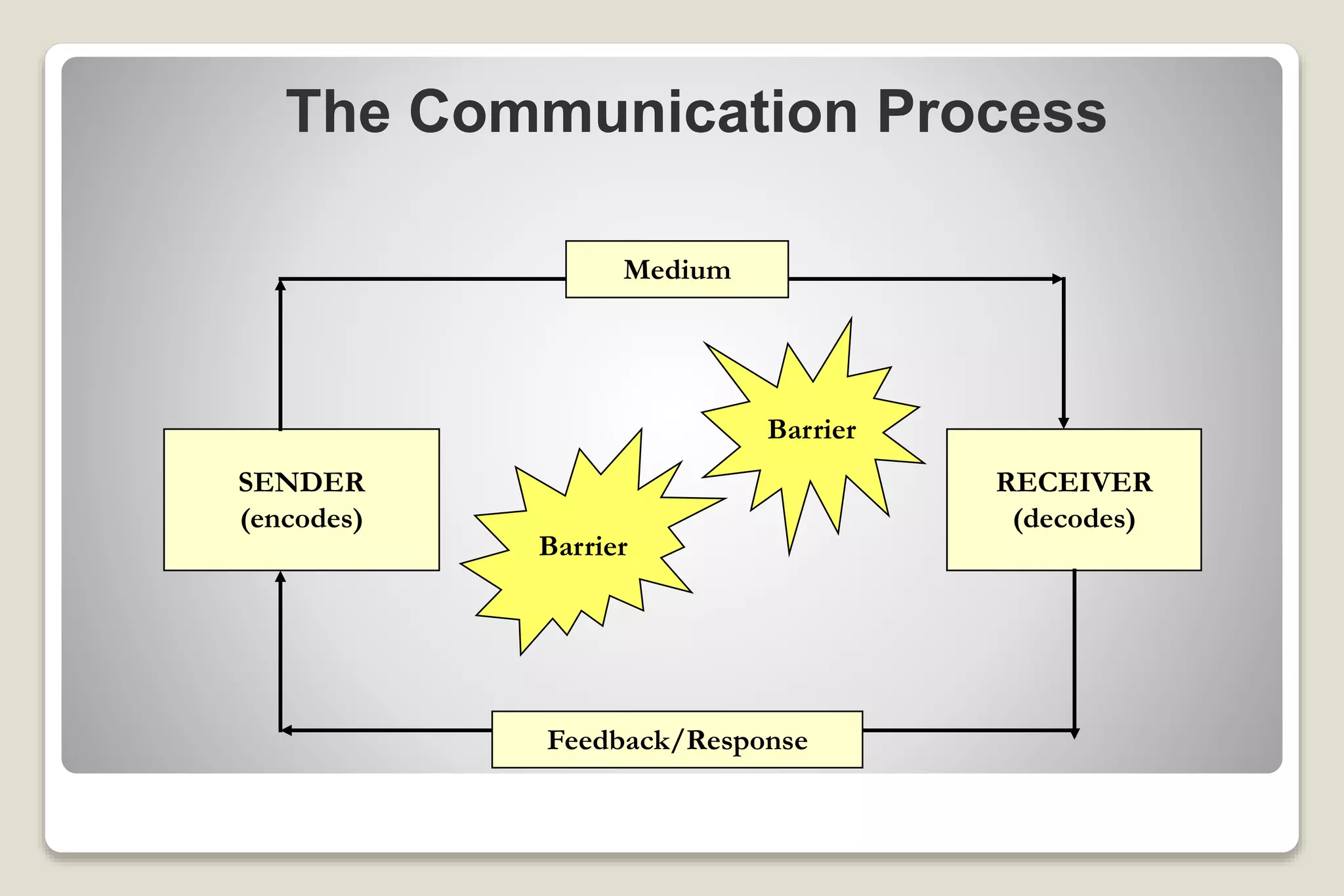This document provides an overview of effective communication. It defines communication and lists its key characteristics. It discusses the communication process and barriers that can interfere with effective transmission of messages. It emphasizes the importance of active listening and provides tips to improve verbal and non-verbal communication skills. The 7Cs of effective communication are outlined as clear, concise, concrete, correct, considerate, complete and courteous. Various communication channels and styles are described. Barriers to communication and how to improve existing communication levels are discussed. The importance of body language and its role in successful workplace interactions are also highlighted.




















